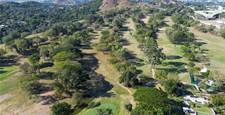You know that it’s really different when you walk into a local restaurant and everyone in the place starts smirking and giggling.
Admittedly, I am not the world’s most beautiful person, but in normal circumstances I have a kind of middle aged blandness that rarely excites such a response, certainly from total strangers.
But these were not normal circumstances. It was downtown Guangzhou, on a Friday evening, on a main thoroughfare not far from the YueXiuShan Stadium, the venue for Australia’s game the following night against China.
Most tourists don’t stray too far from the western hotels in such places, preferring the certainty of menus in English – or at least with pictures – to the serendipity of a menu in which everything was written in Chinese script and definitely not illustrated.
And the restaurant staff and local clientele were obviously bemused to see a “white ghost” sitting down among them, pointing at menu items and resorting to sign language – snorting like a pig and clucking like a chicken – to find the dish of the day.
That experience, along with the heat haze, the pollution, the smog and the teeming crowds, brought home more than anything else that Asia, despite its economic growth, its developing industries and its increasingly westernised aspirations, remains for the most part a different world, one that the Socceroos, Australian clubs and football fans still have much to learn about.
Australia dealt with the Chinese readily enough, a hugely impressive first half lit up by a Mark Viduka masterclass putting Graham Arnold’s men on the road to a 2-0 victory 24 hours after I had enjoyed a dumpling soup with noodles and a beef and cabbage accompaniment – more by luck than judgement.
But while China may be the biggest country in Asia, it certainly is not representative of the conglomerate of 50-odd countries lumped together by FIFA in the Asian Football Confederation.
Weather, social and religious customs – China is still officially a Communist country, other nations in Asia are Buddhist while many more are Islamic – transport, stadia and hotel infrastructure, political conditions, the lack of widely spoken English – compared to Europe – and a host of other factors will become apparent as Australia integrates itself ever more deeply as a footballing power in the region.
The weather is perhaps the most obvious challenge. China itself boasts several different climate zones. Thus while in early March Sydney FC shivered in Shanghai in freezing temperatures on the east coast of the country, the Socceroos sweltered in a hazy, humid environment in warm temperatures in the southern part of the nation just a few weeks later.
But those variations are nothing compared to what Arnold’s side experienced seven months earlier when it travelled to Kuwait in the Middle East, where temperatures in the high forties made it all but impossible to compete against the seasoned locals in an Asian Cup qualifying match.
For games in East Asia it seems likely that Australia will opt to make its base in the most “westernised” part of the region, Hong Kong, while Dubai would seem the obvious base for games against the Middle Eastern nations in West Asia.
Australia stayed in the former British colony Hong Kong for the match in Guangzhou – a close two hour train ride away – but even then things were not as straightforward as Arnold and his staff had hoped. The search for a training ground on a grass field proved fruitless, and tactical work and practice on “shape” had to be conducted on an artificial surface in the middle of the Happy Valley racecourse.
Expect that to be replicated throughout the World Cup campaign. Australia is ranked as an Asian powerhouse, and can expect few favours when it travels overseas for crucial qualifying games. No point complaining – it’s how the game works at international level, and it’s all part of the learning experience. But I can certainly vouch for the food…
Admittedly, I am not the world’s most beautiful person, but in normal circumstances I have a kind of middle aged blandness that rarely excites such a response, certainly from total strangers.
But these were not normal circumstances. It was downtown Guangzhou, on a Friday evening, on a main thoroughfare not far from the YueXiuShan Stadium, the venue for Australia’s game the following night against China.
Most tourists don’t stray too far from the western hotels in such places, preferring the certainty of menus in English – or at least with pictures – to the serendipity of a menu in which everything was written in Chinese script and definitely not illustrated.
And the restaurant staff and local clientele were obviously bemused to see a “white ghost” sitting down among them, pointing at menu items and resorting to sign language – snorting like a pig and clucking like a chicken – to find the dish of the day.
That experience, along with the heat haze, the pollution, the smog and the teeming crowds, brought home more than anything else that Asia, despite its economic growth, its developing industries and its increasingly westernised aspirations, remains for the most part a different world, one that the Socceroos, Australian clubs and football fans still have much to learn about.
Australia dealt with the Chinese readily enough, a hugely impressive first half lit up by a Mark Viduka masterclass putting Graham Arnold’s men on the road to a 2-0 victory 24 hours after I had enjoyed a dumpling soup with noodles and a beef and cabbage accompaniment – more by luck than judgement.
But while China may be the biggest country in Asia, it certainly is not representative of the conglomerate of 50-odd countries lumped together by FIFA in the Asian Football Confederation.
Weather, social and religious customs – China is still officially a Communist country, other nations in Asia are Buddhist while many more are Islamic – transport, stadia and hotel infrastructure, political conditions, the lack of widely spoken English – compared to Europe – and a host of other factors will become apparent as Australia integrates itself ever more deeply as a footballing power in the region.
The weather is perhaps the most obvious challenge. China itself boasts several different climate zones. Thus while in early March Sydney FC shivered in Shanghai in freezing temperatures on the east coast of the country, the Socceroos sweltered in a hazy, humid environment in warm temperatures in the southern part of the nation just a few weeks later.
But those variations are nothing compared to what Arnold’s side experienced seven months earlier when it travelled to Kuwait in the Middle East, where temperatures in the high forties made it all but impossible to compete against the seasoned locals in an Asian Cup qualifying match.
For games in East Asia it seems likely that Australia will opt to make its base in the most “westernised” part of the region, Hong Kong, while Dubai would seem the obvious base for games against the Middle Eastern nations in West Asia.
Australia stayed in the former British colony Hong Kong for the match in Guangzhou – a close two hour train ride away – but even then things were not as straightforward as Arnold and his staff had hoped. The search for a training ground on a grass field proved fruitless, and tactical work and practice on “shape” had to be conducted on an artificial surface in the middle of the Happy Valley racecourse.
Expect that to be replicated throughout the World Cup campaign. Australia is ranked as an Asian powerhouse, and can expect few favours when it travels overseas for crucial qualifying games. No point complaining – it’s how the game works at international level, and it’s all part of the learning experience. But I can certainly vouch for the food…












